Little Wren
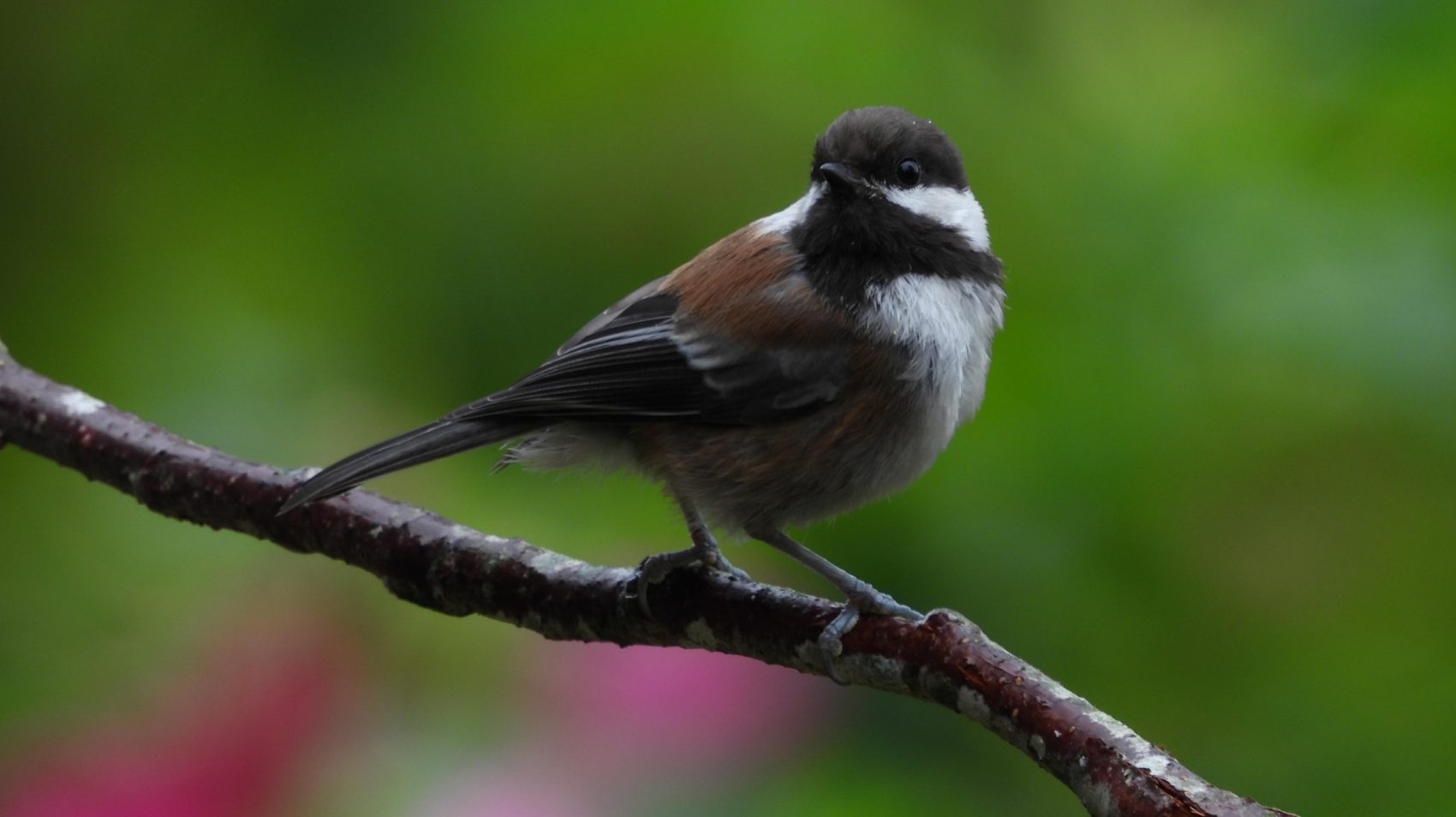
A small bird story: As with many other townhouses, ours has rules stating feed cannot be left outside for the birds. Therefore, at our patio, each bird visitor takes their food “to go” individually. Especially when the weather makes finding food difficult, it is typical to find little clusters of chickadees (image above), juncos (image below) and a few assorted sparrows appear. They’ve trained us to have their “order” ready for individual delivery when they perch expectantly on or under the rhododendron. Usually, 2 or 3 chickadees continue to show up during the summer, sometimes only to take a dip in the bird bath, but other times they let us know they want a treat “to go”.
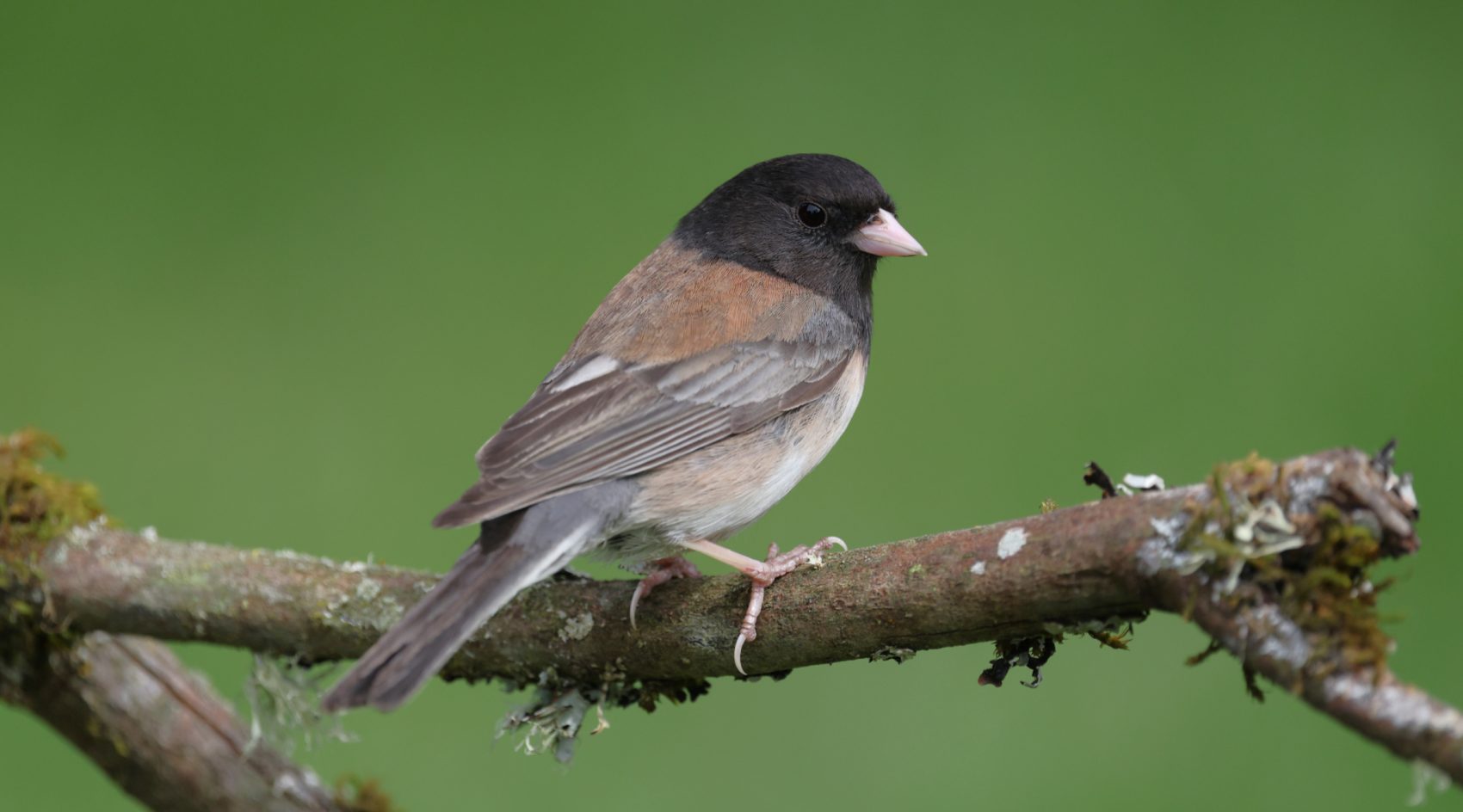
In the winter of 2022, a tiny stranger appeared on the periphery of the bird crowd. Even though picked on and chased, it had a presence and tenacity that was quite impressive. We began tossing the little stranger’s food way off to the side so the other birds didn’t notice it. Fascinated, we watched this creature with its long, slender beak throw itself on the peanut heart, vigorously hacking away, using the weight of its whole upper body behind the maneuver.
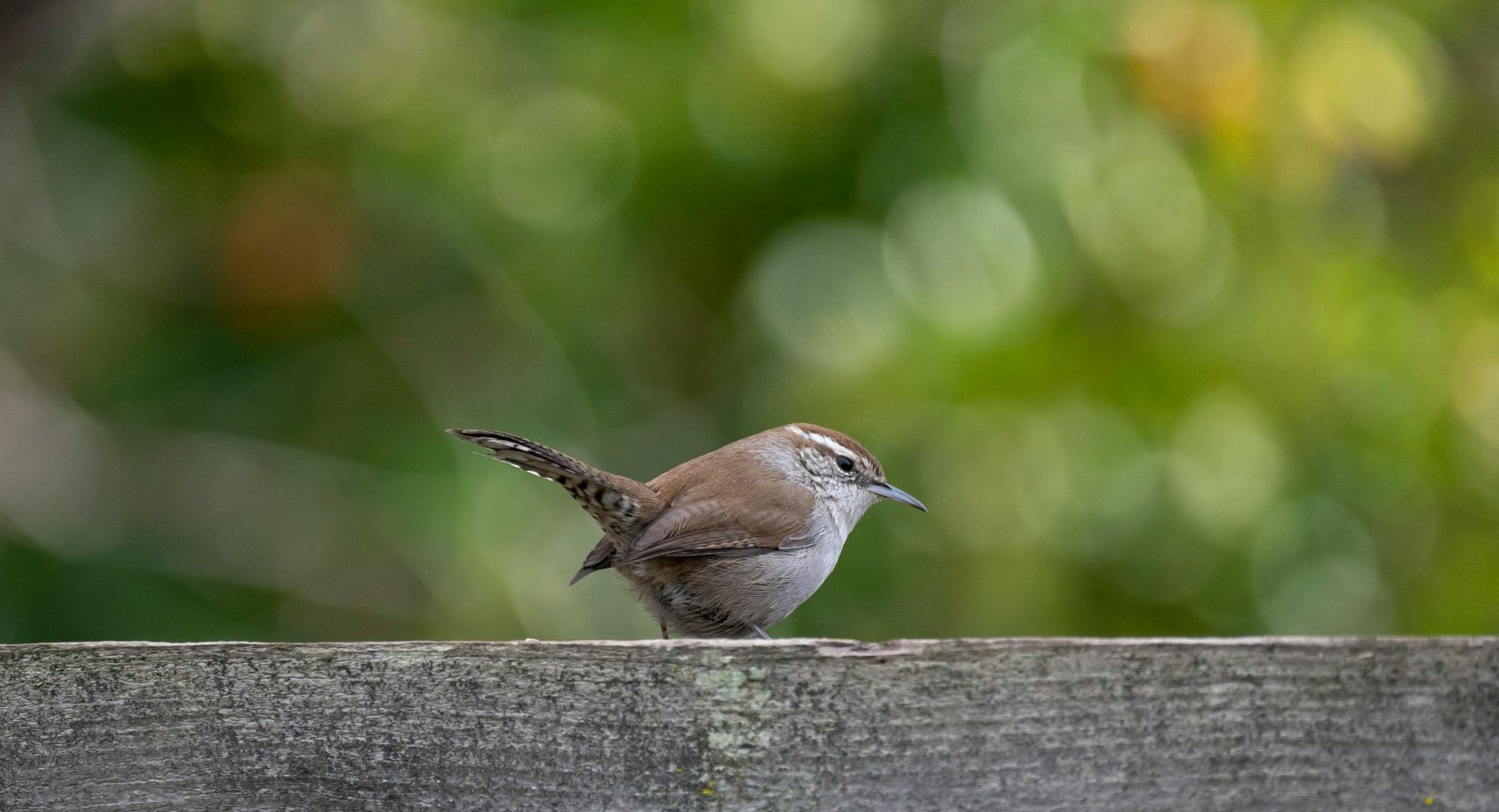
This spring (2024) the little stranger took its own place among the chickadees, juncos and sparrows, hopping around on the branches of the rhododendron, waiting for a turn to dive for a peanut heart. It did come as a surprise when the spring rush died down, leaving only a token chickadee or two around, to see the tiny stranger appear solo. And then a wonderful little pattern emerged which lasted for a couple of weeks: a few minutes after retrieving a peanut heart, the little stranger would fly high into the neighboring tree and treat us to a few moments of song – sharp, bright, melodic and beautiful.
The intriguing and diminutive stranger with double charisma and incredible voice is, according to the bird dictionaries, a Bewick’s wren (pronounced “buicks”).
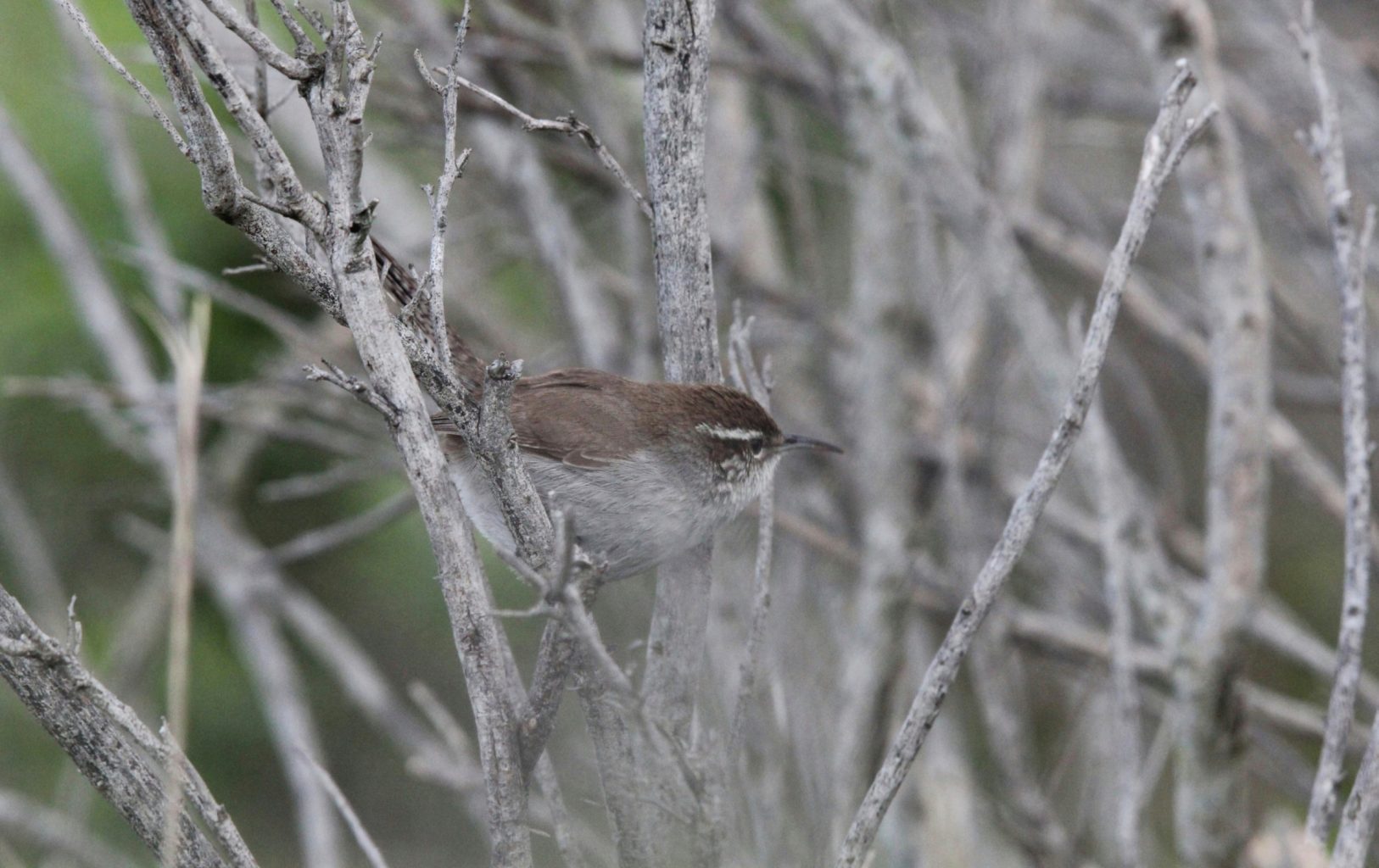
Bewick’s wren’s official name is Thryomanes bewickii and is the only species in the genus Thryomanes. They are about 5.1 inches long and .03-.04 ounces, grey-brown on the upper portion and white below. Their beautiful long white eyebrow and long tail distinguishes them.
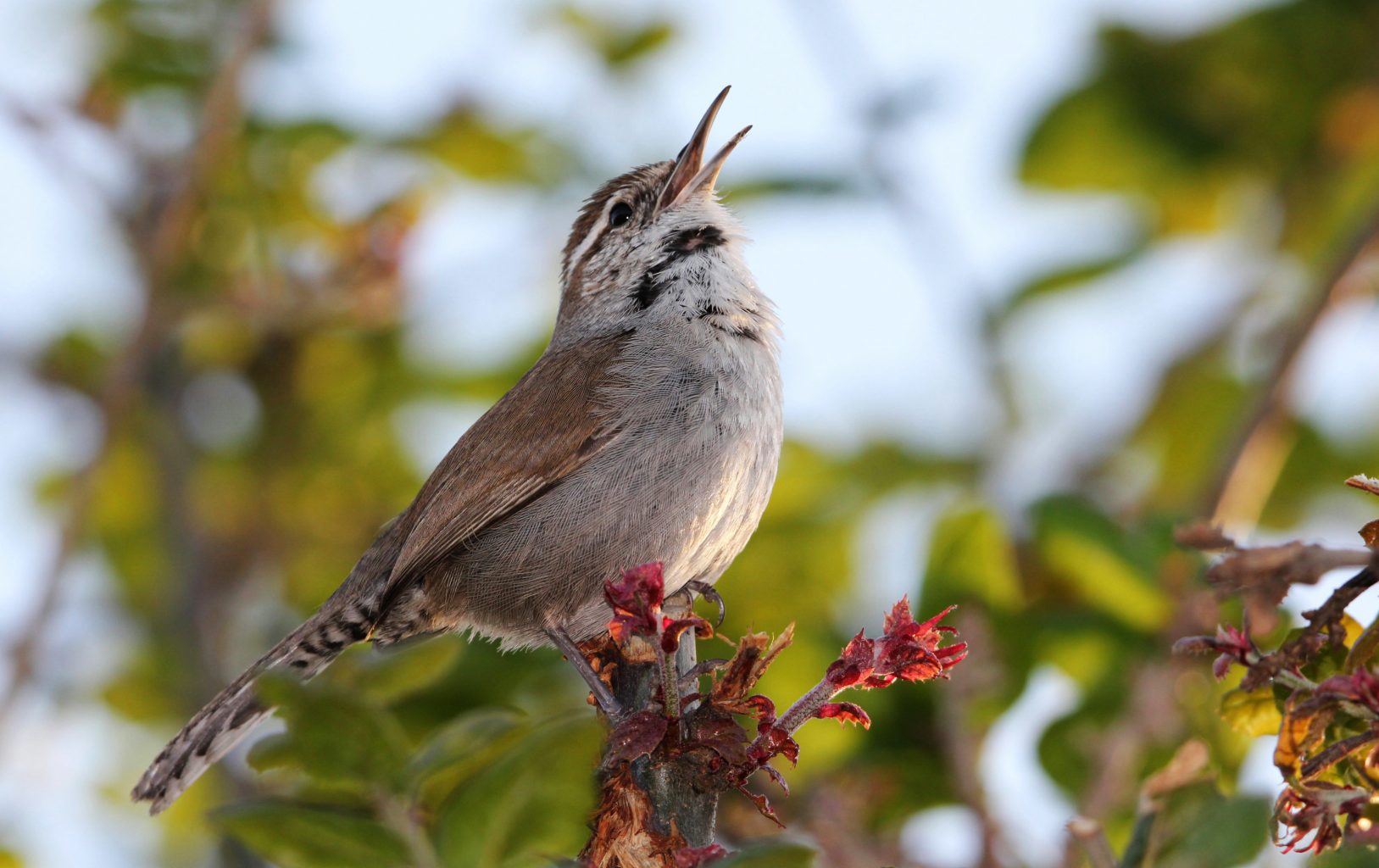
This wren species was named for a British engraver (Thomas Bewick) who was a friend of the famous bird artist, J.J. Audubon. The author Robert Ridgway wrote this in his “Ornithology of Illinois” in 1889, “No bird more deserves the protection of man than Bewick’s Wren. He does not need man’s encouragement, for he comes of his own accord and installs himself as a member of the community, wherever it suits his taste. He is found about the cowshed and barn along with the Pewee and Barn Swallow; he investigates the pig-sty; then explores the garden fence, and finally mounts to the roof and pours forth one of the sweetest songs that ever was heard.”

Bewick’s Wrens are still common in much of western North America, but have disappeared from the East. The eastern decline is apparently due, at least in part, to the range expansion of the House Wren. The House Wren is suspected of removing eggs from the Bewick’s nests and so as people put up more nesting boxes, the House Wren population seemed to have taken over.
Geographic differences have been observed in the coloring as the Pacific populations being a little darker than the Southwest populations, which tend to a greyer plumage. Before their decline, the Eastern population was a little more colorful with a touch of red tint in their brown feathers.
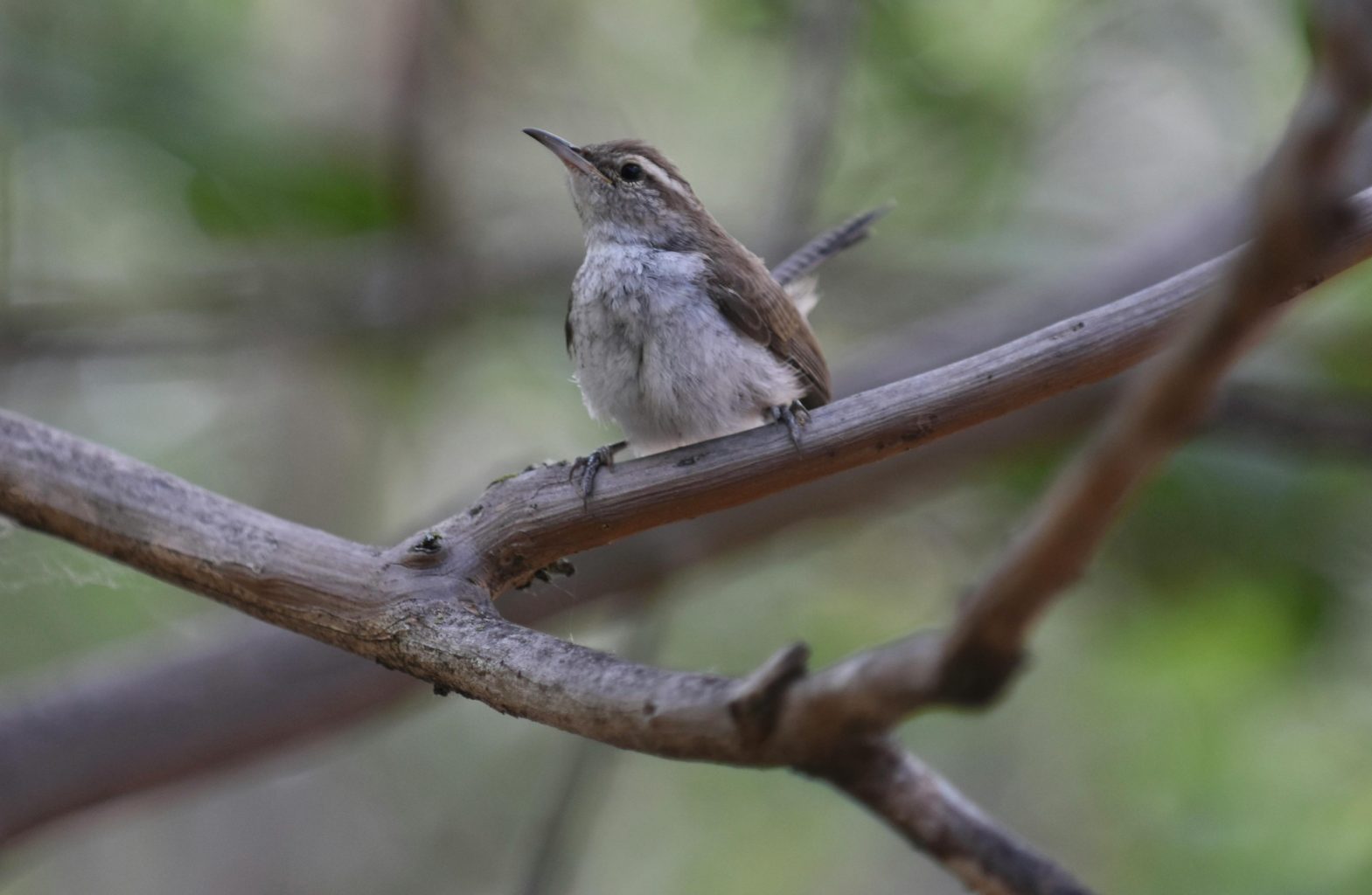
Bewick’s wrens are largely monogamous. Courtship commences when the male begins singing. He may sometimes take a break from his song in order to chase away any competitors. Once he and his lady get together, they forage for food together. The male begins the nest building himself using plant materials and twigs, lining the nest with feathers. Usually, this next is in the shape of a cup tucker into a nook or cavity. His lady then joins him to lay 5 – 7 eggs with two broods in a season. Although the pair stay together for this portion of their lives, they do not remain together throughout the winter, preferring solitude.
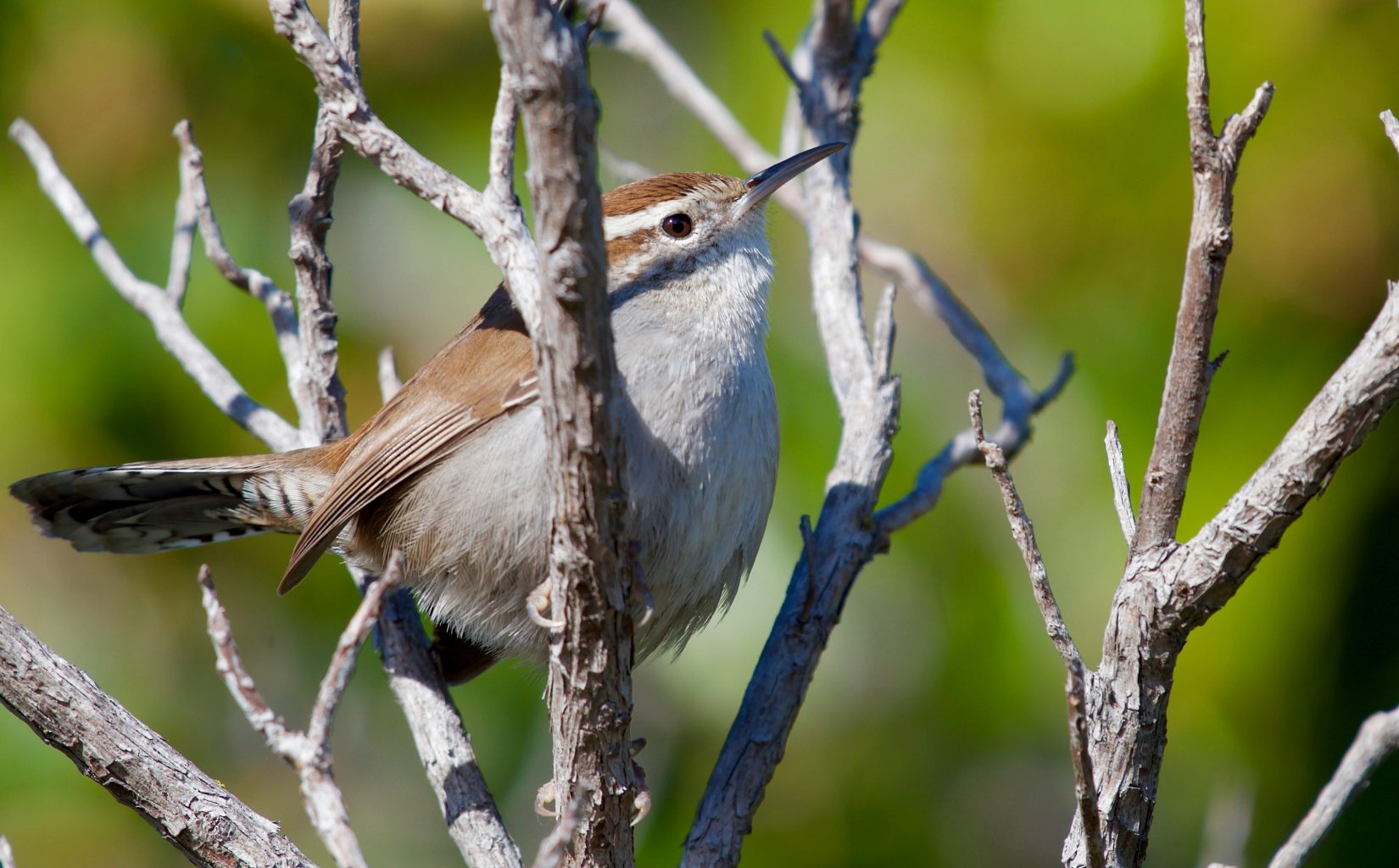
The male Bewick’s Wrens sing to attract a mate as well as protecting their own territory. Both males and females have short calls to express agitation against predators or to keep in touch with their mate while hunting for food. A Bewick’s sound is quite variable and typically lasts about two seconds with 3-5 distinctive phrases with a mixture of buzzes and trills.
Studies show, when compared with other birds such as Song Sparrows, their songs follow a much more deliberate pattern. One author recorded a set which lasted for almost two minutes with a total of 11 unique songs from one Bewick’s wren in his back yard.
Adult male Bewick’s Wren have their own unique set of songs. Baby males start life by experimenting and babbling like human babies to copy their father’s songs. When they grow up and leave home to claim their own territory, their songs change to sound more like their neighbors. Males have been known to execute over twenty variations to their song pattern.
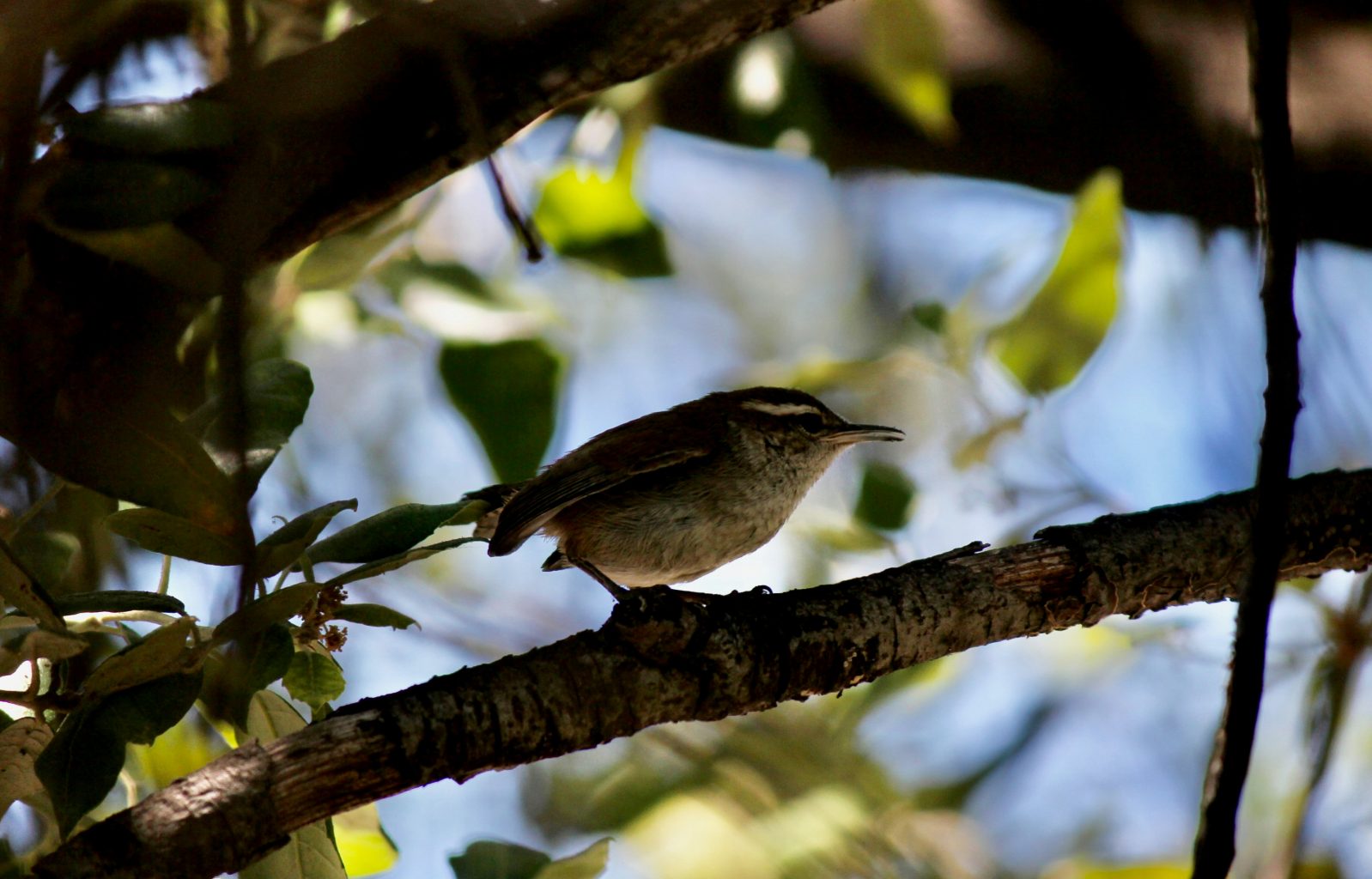
Both the Native Americans and Celtic people are among those whose history shows a strong interest in the wild life in their vicinity. These people followed the actions and behavior of animals, drawing deeper meaning, lessons and symbolism which they then applied to their own behavior. A good example is emulating the Bewick’s Wren courage and persistence or how the couples work together, sharing the work of raising their young.
For the Celts, the wren was considered sacred, aligned with the god Lugh. Symbolic of transformation and rebirth, wrens were often used in their divination practices. In Europe and Asia, these birds were associated with good luck and prosperity, bringing good fortune.
Even watching these lively creatures is uplifting – themes of protection, peace, charm, charisma and perseverance are all associated. A library, internet or in-person nature search is bound to turn up some inspiration for anyone whose spirits may be flagging.
